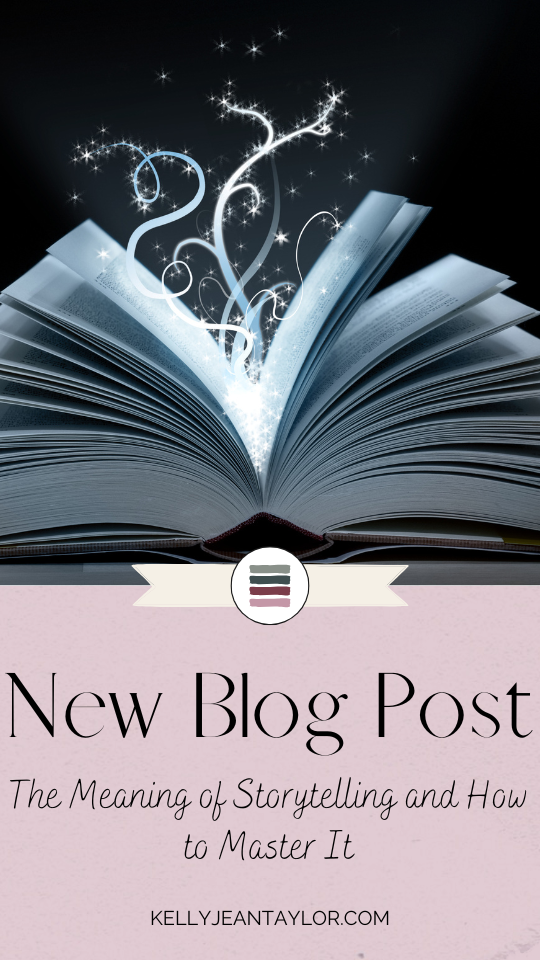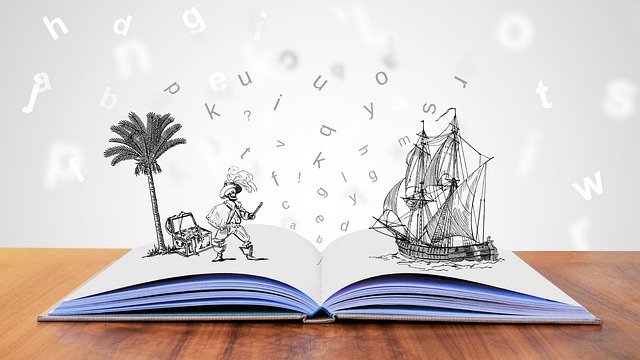
The Meaning of Storytelling and How to Master It
This post may contain affiliate links. This just means that I may receive a small commission, at no additional cost to you, if you decide to purchase any of the products discussed in this post.
There are a few different ways to look at storytelling, and depending on who you are and where you grew up, you may have interpreted it in different ways. Though I feel the meanings are very similar and part of every culture around the world to tell stories, import morals, and tell of times past.
What Does Storytelling Mean?
If you want to get technical, here is what the definition says:
the or writing of stories
dictionary.com
That simple definition encompasses so much. From writing all kinds of tales to telling them in a group or one on one. Let’s go a little deeper though. What does storytelling really mean? If you really think about it.
Storytelling and an ancient art from passed down from generation to generation. It’s a from of human expression as old as time. The universal language, giving it a place in every culture out there. This is part of the reason why we are able to communicate even when we haven’t learned another language. Images and interpretation are used to communicate when a barrier exists.
How we Interpret Storytelling
The way we interpret storytelling is different from its definition as it uses a more physical reference. Storytelling is more interactive, with the use of words and actions that reveal a visual story in the listeners imagination.
Interactive
Storytelling is interactive. There is a connection between the story teller and their listeners. The motions, actions, and words used to tell the story provides a visual interactive aspect to the listeners. They are able to see, hear, and experience as they respond to the story tellers created world.
Use of Words
We know words are mostly vocal, but for those that cannot speak, there was the creation of Sign Language. The use of words in the form of physical movement and gestures, which storytellers have used to present stories to others.
Choosing the right words to communicate an action or expression isn’t always easy for the storyteller, but it’s become part of the writing process for authors as they convey certain emotions, situations, actions and more.
The point of the use of words is to create a visual picture of the story being told for readers to relate to and understand. If your readers/listeners don’t understand or comprehend your meaning, then you’ve completely lost them and it’s difficult to get them back.
Presents a Story
Obviously, this is what we are talking about, but story is the whole with everything that makes up the story as smaller parts. Narrative with the use of words, actions, gestures and interaction with the readers/listeners to create the visual story using their own imagination to fill in the gaps.
That imagined picture is what they see and will relate to as the story is being told. What they will come back to as they remember the tale and what they will take away from as stories of old are passed down from one generation to the next.
Encourages Active Imagination
Nothing encourages an active imagination better than that of reading stories. Even short stories and poems lend to the readers imagination as the words they read are interpreted within their minds eye. Rather than seeing the story being told as in a cinema setting, they are forced to imagine the setting, characters, actions, voices, and more.
That’s what’s great about imagination, it’s completely yours and it’s not gonna be the same as anyone else. When hearing the same story and asked to draw what they see, no two will be completely alike. Will they have similarities, yes, but they won’t interpret every aspect exactly the same way.
Master the art of StoryTelling
We use stories to convey a message, entertain and encourage our audiences with the colorful settings, antics and actions of the characters and even the use of fantasy or sci-fi aspects. There are so many ways to entertain within a story while giving your readers something to think about. Let’s look closer at what it takes to master the art of storytelling.
Know Your Audience
This may seem like a no brainer. You should know your audience almost personally. Discover who it is that you are trying to convey your message too. Give specifics even if you know you won’t use all the information. Just like creating a character, you should know as much as you can about your ideal audience in order to provide the right story.
You want a clear image of your audience. Though you may expand your audience later; it’s easier to concentrate on one and become an expert for them before moving to another genre or sub-genre.
Make The Audience Care
Give them a reason to be interested in the story you are bringing to the market. Not only will they need to care about the characters, their world and their actions, but you should give them a reason to care about you and your writing. Don’t get overly personal, keep it about your writing, but make them care.
You can do this by providing aesthetically pleasing posts, emotionally jarring phrases and more. Keep your readers interested and invested, you’ll keep them forever.
Set the Scene
As writers and storytellers, it’s important to engage the senses and provide context for the story. When your characters walk into the room and smell something specific or run their fingers along a specific surface, your readers should get a sense of the particular smell or sensation of touch.
This is one way to engage your readers and keep them interested. They are immersed into the story, traveling with the characters and experiencing what they experience along with them.
Know Your Message
What is the purpose of telling the story? Make it relevent and interesting for the reader/listener. What do you want your audience to take away from the story once they are finished reading/listening to it? What’s the moral? Give your readers/listeners something to think about. Leave them with something that will bring them back to read or request another story. Whether that is a lesson learned or just to see you amazing performance as you read to them. Give them a connection to you.
Engage your Audience.
Create an immersive experience with words that will give your readers/listeners first hand experience. Create a story so detailed they feel as though they are within the tale you are telling. Be descriptive, expressive and provide that imaginative touch they need to fully enjoy the story as it’s being told.
End with a Grande Finale
Unless you are building suspense or reading a series, there should be closure to the story. Leave no questions that need answering and provide a sense of awe with your readers. Be sure to leave that building moment with them as well. You know, that moral or purpose of the story we mentioned earlier. Yeah, your audience should get that as well. It doesn’t necessarily need to be reiterated, but find a way to be sure they are taking away from the story what you want them to take from it.
Don’t be Limited by Words
If you feel it would benefit your readers/listeners, then by all means, provide images to help convey the story. They say pictures are worth a thousand words and video even more so. Use them as support or visual cures or just something extra to give them further connection. It gives them a sneak peak into the world that was created and their imagination can fill in the rest.
You can also connect these to your brand if they are done by you or you have permission to use the work. Have you ever seen the media of an author who is able to compliment their brand with images and I’m not talking just any random images. I’m taking drawings and work done by others that covey their interpretation of characters and scenes within the story. Some of them are amazing and those authors are lucky to have such devoted fans that connected so well to their stories that they took it upon themselves to want to get the images from their head down on paper (or canvas/computer).
Enjoy the Process
You are telling the story, whether through words, actions, images or more. If you don’t enjoy the story yourself as it’s being told, your readers/listeners won’t either. Get invested in the story you are creating/reading, love the characters, the settings, the action and emotions.
Your readers/listeners can tell if you are invested in the story and if you’re not. So show them through your actions just how awesome this story really is. Enjoy it!
Final Thoughts
Storytelling is huge as it is use in different areas of our lives. Businesses use it to advertise their brands, novelist use it to immerse readers into their world, and we use it daily to communicate on social media. There is storytelling everywhere you look, it just depends on whether they grab your attention and keep it long enough to get you invested in what they have to say. Really think about how you are preserving things around you and you’ll find a story you hadn’t realized was there all along.






